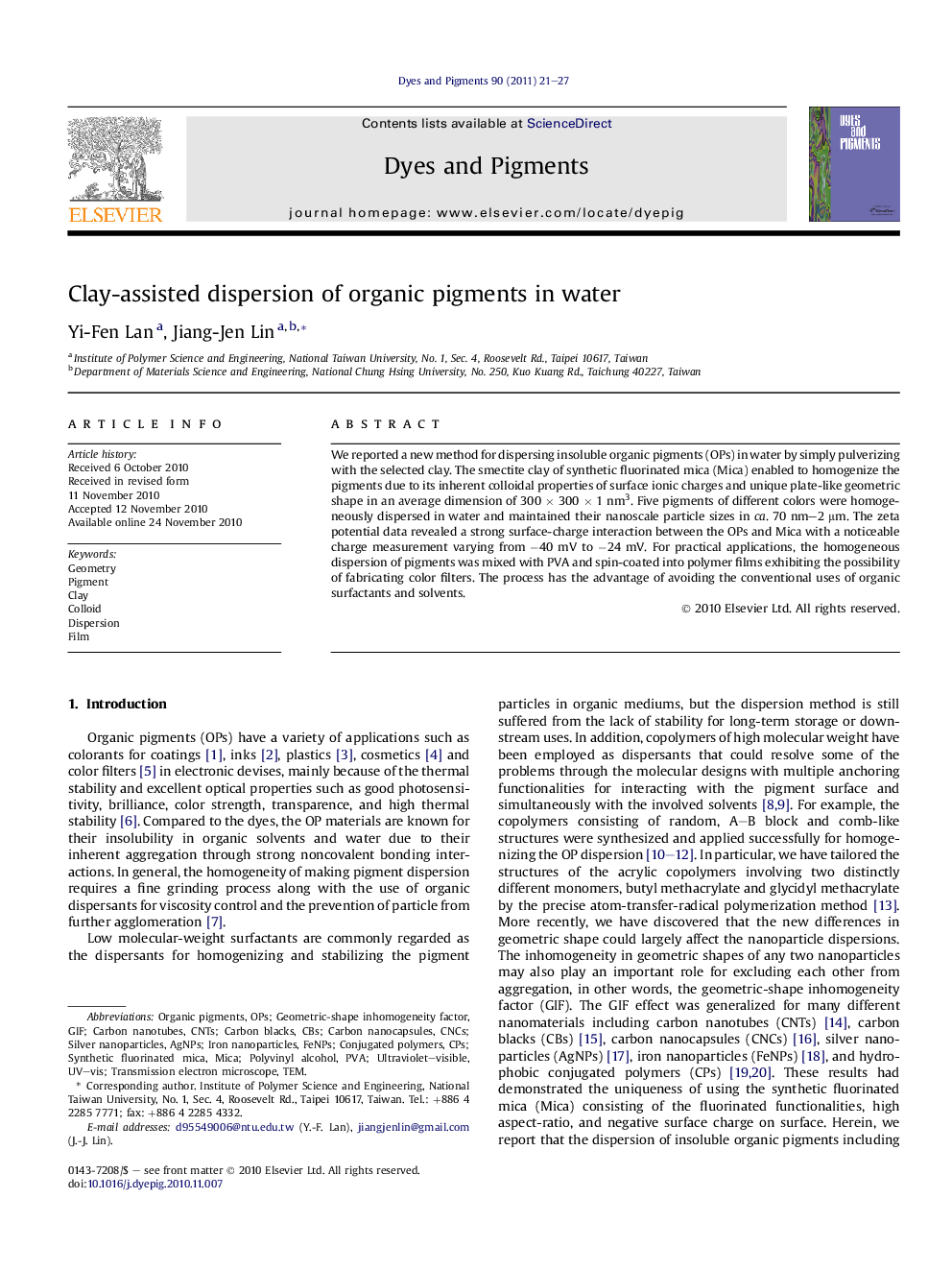| کد مقاله | کد نشریه | سال انتشار | مقاله انگلیسی | نسخه تمام متن |
|---|---|---|---|---|
| 177291 | 458975 | 2011 | 7 صفحه PDF | دانلود رایگان |

We reported a new method for dispersing insoluble organic pigments (OPs) in water by simply pulverizing with the selected clay. The smectite clay of synthetic fluorinated mica (Mica) enabled to homogenize the pigments due to its inherent colloidal properties of surface ionic charges and unique plate-like geometric shape in an average dimension of 300 × 300 × 1 nm3. Five pigments of different colors were homogeneously dispersed in water and maintained their nanoscale particle sizes in ca. 70 nm–2 μm. The zeta potential data revealed a strong surface-charge interaction between the OPs and Mica with a noticeable charge measurement varying from −40 mV to −24 mV. For practical applications, the homogeneous dispersion of pigments was mixed with PVA and spin-coated into polymer films exhibiting the possibility of fabricating color filters. The process has the advantage of avoiding the conventional uses of organic surfactants and solvents.
Silicate clays of plate-like geometric shape enabled to disperse water-insoluble organic pigments (OPs) in aqueous suspension. Non-organic dispersion of pigments in nanometer scale was achieved and attributed to the mechanism involving the presence of another nanomaterial which favored a colloidal formation. The distinct difference in geometric shapes of two nanomaterials rendered the mutual interactions through their shape inhomogeneity and consequently resulted in a homogeneous dispersion.Figure optionsDownload as PowerPoint slideResearch highlights
► Silicate clays of plate shape enabled to disperse water-insoluble organic pigments.
► RGB pigments in nanometer scale were dispersible in water by a pulverization method.
► The mechanism involves noncovalent interaction between pigment and colloidal clay.
► The difference in geometric shapes is also important for the homogeneous dispersion.
Journal: Dyes and Pigments - Volume 90, Issue 1, July 2011, Pages 21–27